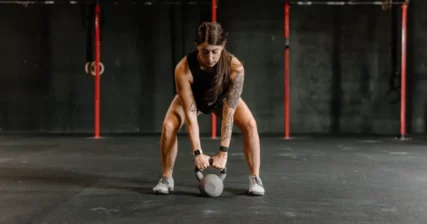Listen on: Apple Podcasts | Spotify
The following is the draft preface of Vigorous: 3 Foundational Habits of Exceptional Health, one of two books I plan to publish this year. This book should be available in the spring of 2023, with a second book, Sisu, becoming available in the summer.
Four glasses of water, three glasses of diet soda, two slices of turkey, and one slice of dry wheat toast filled my cafeteria tray. This was breakfast. I carried a brown bag to school for lunch. It included a sandwich, some vegetables, fruit, and a cookie. I ate the meat from the sandwich and the vegetables. Dinner was back at the cafeteria, where I ate a bit of lean protein, salad, and a slice of bread and drank lots of diet soda and water. The water and diet soda helped curb my hunger pangs. I tried to keep my calories as close to 600 per day as possible, although once per week, I allowed myself a cheat meal, usually on a Friday evening. I’d walk across the street from my dorm to a convenience store. After walking up and down each aisle, salivating at the thought of eating a Snickers bar, a pint of ice cream, or a frozen pizza, I inevitably settled on a loaf of bread and a bottle of salsa. After returning to my dorm room, I ate two salsa sandwiches. Then, I gave the rest of the loaf to someone else or tossed it in the trash.
I was 16 years old and lived on the Northern Michigan University campus with a small group of ski jumpers at the Olympic Training Center, and took my junior year classes at Marquette High School. Living on the NMU campus, we ate meals in the same cafeteria as the other college students living on campus.
When the school year began, I weighed 157 pounds. At 5’9”, I wasn’t fat. Not like I had been when I was a pre-teen. But I was still too heavy to be a competitive ski jumper. My coach had pulled me aside early in the school year to reinforce this reality. He said something like, “Tom, if you’re going to be serious about the sport, you need to lose weight. You’re just too heavy for your height.” He was right. At 5’9”, 157 pounds was too heavy. At the same height, a heavier ski jumper doesn’t fly as far as one with the same body type who weighs less. Back then, I often heard that anorexia was more common in ski jumping than in any other Olympic sport, including gymnastics. It got so bad that the International Ski Federation eventually made rules about the minimum weight a ski jumper had to weigh at any given height. If they weighed less, they’d be penalized by having to use shorter skis. Since the skis act as wings in flight, this would be a significant handicap for a jumper.
So, my coach, responsible for my success in the sport, was right to remind me I needed to lose weight, though he had no role in how I did that. I knew a little bit about calories, so I decided to eat as close to 600 calories per day as possible. By the time the ski jumping season began that winter, I’d dropped to 137 pounds. I had to cinch my 28” waist jeans with a belt to keep them from falling off. Somehow, while eating only 600 calories and training for two to three hours a day, which often involved miles of running, plyometrics, sprints, and gymnastics if we weren’t ski jumping, I maintained a GPA of around 3.8. Thinking back on it today, I understand why my mom was mortified the first time she saw my emaciated face at one of the ski jumping tournaments.
As for my ski jumping performance that season, it was…inconsistent. In some tournaments, I did well; in others, I was beyond disappointed. By the season’s end, I realized my ambition to be a world-class ski jumper was over. I knew I’d return home to Ely, Minnesota, for my senior year. And though I knew I’d ski jump the following year for one final season, I knew that after that, I’d hang up my gear and go on to college.
With my mind made up and two months left in the school year, I decided to try something new for my workouts. NMU had a very nice gym, and up to that point, I’d never used the weight room out of fear of gaining weight. Since I wasn’t worried about that anymore, I took a workout program from a Muscle & Fitness magazine and went to the gym.
The first day I walked into the weight room, I probably looked like a meth addict, but within two weeks, I saw lines on my shoulders that had never been there before. Some bumps appeared on my stomach, which had just been a thin and squishy midsection. And my legs! I couldn’t believe how well I could jump after doing back squats and leg presses for a month. Each week, the scale went up, but in the mirror, I looked leaner and leaner. I ate more of everything…a lot more protein, but more carbs and junk, too. And yet, I looked, felt, and moved better than ever. I was hooked on this “new to me” approach to fitness and knew it would guide me in the years to come, including my career choice one day.
Thirty years later, you’re reading this book. In those 30 years, I got a pre-med biology degree from The College of St. Scholastica in Duluth, Minnesota, added more than a dozen nutrition and exercise certifications (though I only maintain the best one, my CSCS), and worked for one of the largest and most successful fitness companies for fourteen years, where I started out as a personal trainer and left as a vice President in charge of the company’s supplement, nutrition, weight loss, lab testing, metabolic testing, and fitness device businesses. I also had a short stint as Vice President of Business Development for one of America’s most respected supplement companies. I’ve written several hundred fitness articles and, since leaving the corporate world, started my own virtual personal training business. To date, my clients number in the hundreds, if not thousands.
Why do I mention all of this? Because it began with a misguided approach to losing weight in a sport I no longer participate in, which then led me to a weight room at Northern Michigan University, where I first experienced the impact resistance training has on your body. And that eye-opening experience sparked a passion for fitness that continues to this day. Had I not gone from a middle school fat kid to an anorexic teenager, I might never have stepped in a weight room to see what strength training can do.
I’ve taken all that I’ve learned in those thirty years, considered what works and what doesn’t, and distilled it all down to three habits that impact your health more than any others. I call them The Vigorous 3, and they form the foundation of a health-enhancing, fitness-creating, longevity-supporting lifestyle. Those three habits play more of a role in establishing a strong and healthy body and mind than any others, and it’s my belief that if you make them nonnegotiable parts of your life, remaining fit and healthy will be easier than you’d ever imagine.
I hope someday in the distant future, you’ll look back at what you learned from this book and realize it had a significant, positive impact on your well-being from the day you first finished reading it.
Oh, and in case you’re wondering, none of the Vigorous 3 involve eating salsa sandwiches.
The completed book should be available in the spring of 2023. If you’re a Nikkola Newsletter subscriber, you’ll be the first to find out when it’s available.



